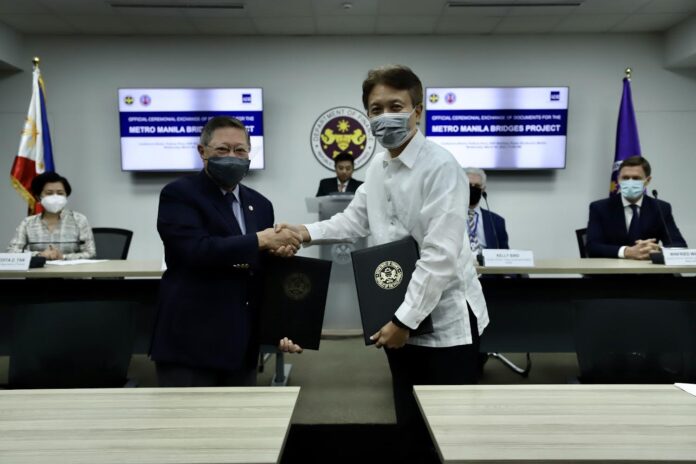
-
Construction of three climate-resilient bridges across Marikina River in Metro Manila to decongest traffic-heavy areas will get under way this first half of 2022
-
Targeted for completion in 2026 are the Marcos Highway-Saint Mary Avenue Bridge, Homeowner’s Drive-A. Bonifacio Bridge, and Kabayani Street-Matandang Balara Bridge
-
The projects will be funded by a US$175.1-million (about P9.1 billion) loan from the Asian Development Bank
-
The three bridges spanning more than 3 kilometers across the Marikina River are among 12 to be built under the Metro Manila Bridges Project
Three climate-resilient bridge projects spanning the Marikina River to decongest traffic-heavy areas in Metro Manila are scheduled to start construction in this first half of 2022 and should be completed in 2026, according to the Department of Finance (DOF).
Construction of the Marcos Highway-Saint Mary Avenue Bridge, Homeowners Drive-A. Bonifacio Bridge and Kabayani Street-Matandang Balara Bridge, all in Marikina City, will be funded by a loan of $175.1 million (P9.1 billion at March 30 exchange rate) from the Asian Development Bank (ADB), DOF said in a statement.
The Marcos Highway-Saint Mary Avenue Bridge will link Barangay Calumpang to Barangay Jesus dela Peña and Pasig City. The Homeowners Drive-A. Bonifacio Bridge will connect Barangay Sto Nino to Barangay Tañong, and the Kabayani Street-Matandang Balara Bridge will link Barangay Malanday to Balara, Quezon City.
Finance Secretary Carlos Dominguez III and ADB managing director general Woochong Um exchanged copies of the loan documents for the construction of the three bridges on March 30.
The loan for the three bridges across the Marikina River was approved by the ADB in December last year and became effective on February 10.
With a total length of more than 3 kilometers, the bridges are among 12 to be built under the Metro Manila Bridges Project.
Dominguez said that although there are already 30 bridges across major waterways of Metro Manila, these are not enough to efficiently move vehicular traffic, leading to the current administration’s plan to build 12 more bridges in Metro Manila over the medium term.
“These bridges are crucial components of the Build, Build, Build program that will help our economy bounce back from the adverse effects of the pandemic. With their high multiplier effect and job-generating potential, investments in infrastructure will be the engine for our rapid economic recovery,” Dominguez said in a statement.
He said a key design feature of the three bridges is their ability to absorb strong earthquake shocks and reduce flood risks in the area, making them climate- and disaster-resilient.
Um, for his part, said: “Now, we are seeing the beginning of the end of the pandemic, we hope. And the signing (of the loan agreement) comes at a critical time. We must continue investments in infrastructure now, which is essential for securing strong economic development in 2022, and this comes from a very strong (Philippine) rebound of 5.6% economic growth last year.”
Aside from the three bridge projects, the ADB has provided financing assistance to other big-ticket infrastructure projects totaling $2.3 billion. These include the Malolos-Clark Railway, the Improving Growth Corridors in Mindanao Road Sector, the EDSA Greenways, and the Angat Water Transmission Improvement.




